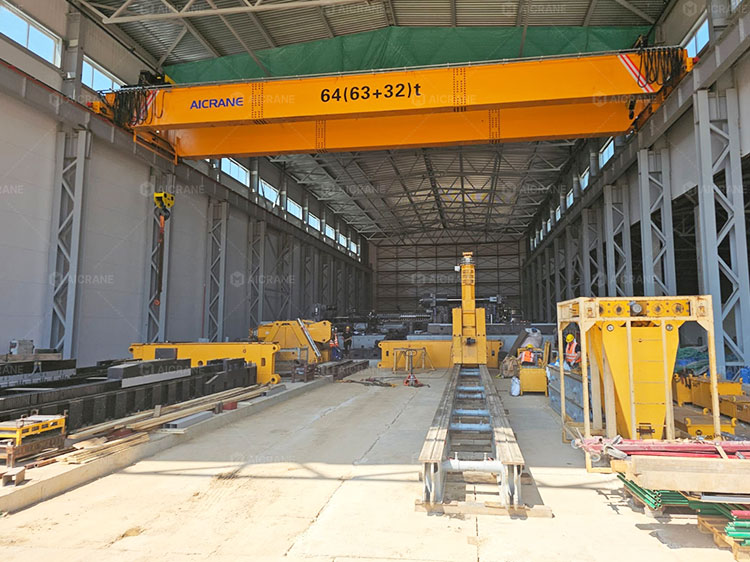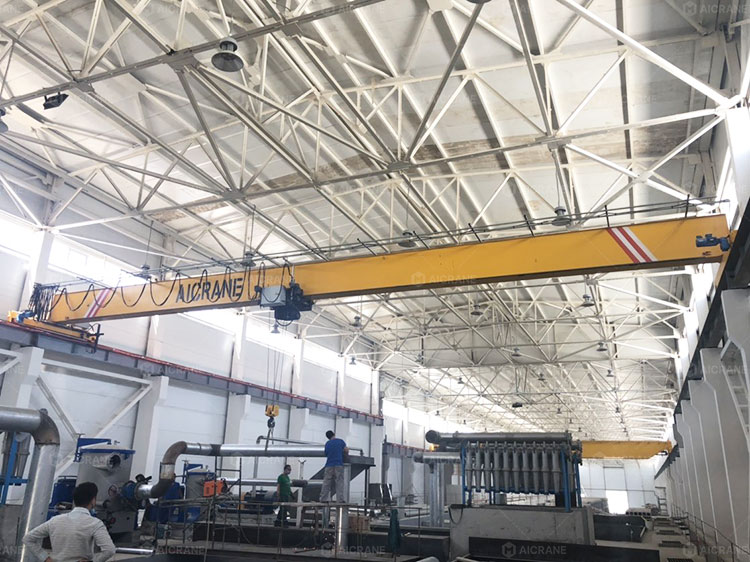Overhead cranes are indispensable in modern industrial operations, providing efficient material handling solutions in factories, warehouses, shipyards, and construction sites. Among these, two primary designs dominate the market: single girder and double girder overhead cranes. While both types serve the purpose of lifting and transporting heavy loads, their capacities, structural characteristics, and suitability for various applications differ significantly. Understanding these differences is crucial for selecting the right crane to ensure operational efficiency, safety, and cost-effectiveness.

Understanding the Basics: Single Girder and Double Girder Cranes
Single girder overhead cranes feature one main beam that spans the width of the workspace. The hoist, which lifts and lowers the load, travels along this single beam. This type of crane is simpler in design, lighter, and generally more cost-effective for moderate lifting capacities. Single girder overhead cranes typically operate with a trolley system running on the top or bottom flange of the beam, depending on the design.
Double girder overhead cranes, in contrast, utilize two parallel beams to support the hoist. The hoist travels on a trolley that rides on a bridge, which itself spans the two girders. This design increases structural stability, distributes loads more evenly, and allows for higher lifting capacities and longer spans. Double girder cranes are widely used in heavy-duty applications such as steel mills, shipyards, and power plants, where lifting extremely heavy and bulky loads is required.
Lifting Capacity Comparison
The primary difference between single girder and double girder cranes lies in their lifting capacity:
-
Single Girder Cranes: Typically, single girder cranes have lifting capacities ranging from 1 ton up to approximately 20 tons. The load is concentrated on a single beam, which limits the maximum weight the crane can safely lift. Single girder cranes are ideal for light to medium-duty operations where extremely high lifting capacities are not required.
-
Double Girder Cranes: Double girder cranes can handle significantly heavier loads, ranging from 10 tons to 500 tons or more, depending on the design and application. The load distribution across two girders enhances the crane’s stability and allows it to manage heavier, larger, and more awkwardly shaped loads. This makes double girder cranes suitable for heavy industrial applications where safety margins and structural integrity are critical.
The difference in capacity is not only a matter of the number of girders but also the design of the supporting structure, the hoist system, and the trolley mechanics. While a single girder crane might suffice for a workshop handling moderate steel components, a shipbuilding yard lifting large ship sections would require the enhanced capacity of a double girder crane.

Span and Lift Height Considerations
Span, the distance between the runway rails, and lifting height, the maximum distance the load can be lifted, are critical factors in crane design and selection.
-
Single Girder Cranes: The span of single girder cranes is typically limited to 20–30 meters. Longer spans introduce excessive deflection in the single beam, reducing safety and operational reliability. Single girder eot cranes are better suited for smaller to medium-sized workshops where spans are moderate, and lifting heights are limited.
-
Double Girder Cranes: Double girder cranes can accommodate spans of 30–40 meters or more, depending on structural design. The dual girder setup provides additional support, minimizing beam deflection and enabling higher lifting heights. This allows double girder cranes to serve operations with large storage areas or tall facilities, such as precast concrete yards or heavy machinery assembly plants.
Structural Strength and Load Distribution
The way each crane type handles loads has a direct impact on operational safety and durability:
-
Single Girder Cranes: Load forces are concentrated on the single beam, requiring it to be stronger or more rigid. The trolley’s movement can create uneven stress, especially with heavy loads or long spans. This concentration of forces can result in higher maintenance needs and shorter service life under heavy-duty conditions.
-
Double Girder Cranes: By distributing the weight across two beams, double girder cranes reduce stress on each girder and provide greater overall structural strength. The hoist moves along the bridge formed by the two girders, which improves stability and reduces wear on the crane components. This design is better suited for repetitive lifting of heavy loads, ensuring long-term durability and reduced downtime.
Hoist Types and Lifting Mechanisms
Another factor influencing overhead crane capacity is the type of hoist used:
-
Single Girder Cranes: Typically equipped with wire rope or chain hoists, which are lighter and easier to install. These hoists are well-suited for capacities up to 20 tons, but using higher-capacity hoists on a single girder can compromise structural integrity due to excessive load concentration.
-
Double Girder Cranes: Usually employ wire rope hoists mounted on the top of the bridge for maximum lifting capacity and stability. Some heavy-duty double girder cranes also use specialized high-capacity hoists capable of lifting several hundred tons. The twin girder structure provides the necessary support for these larger, more powerful hoists.
Installation and Operational Considerations
The installation and operational requirements differ between single and double girder cranes:
-
Single Girder Cranes: Lighter and easier to install, often requiring less foundation work. They can also be more cost-effective in terms of initial investment and maintenance. The simpler design allows for easier modifications and relocation if facility layout changes.
-
Double Girder Cranes: Heavier and more complex to install, often requiring stronger foundations and more precise alignment. Operationally, they offer smoother load handling, reduced sway, and better safety for heavy lifting tasks. While initial costs are higher, the long-term benefits of higher capacity, durability, and reduced maintenance often justify the investment.
Cost Considerations
Cost is a critical factor when choosing between single and double girder overhead cranes:
-
Single Girder Cranes: Lower initial cost and reduced installation expense make them attractive for facilities with light to medium lifting needs. Maintenance costs can also be lower due to simpler structural design and fewer components.
-
Double Girder Cranes: Higher upfront costs are offset by greater lifting capacity, enhanced safety, and longer service life. For operations requiring heavy loads, the long-term return on investment is often higher due to improved productivity and reduced risk of equipment failure.
Practical Applications
The choice between single and double girder cranes largely depends on the specific industrial application:
-
Single Girder Applications: Ideal for workshops, warehouses, light manufacturing, and material handling where lifting loads are moderate. Common examples include loading/unloading machine parts, assembly lines, and storage facilities.
-
Double Girder Applications: Best suited for heavy industries such as steel production, shipbuilding, cement factories, and power plants. These cranes handle extremely heavy loads, provide higher spans and lifting heights, and ensure operational safety under challenging conditions.
Conclusion
In summary, the difference in lifting capacity between single and double girder overhead cranes stems from their structural design, load distribution, span, and hoist compatibility. Single girder cranes are practical, cost-effective solutions for moderate lifting tasks, while double girder cranes excel in heavy-duty, high-capacity applications where safety, stability, and durability are paramount. Selecting the right type of crane requires careful consideration of lifting requirements, facility dimensions, operational frequency, and budget constraints. By understanding these key differences, businesses can make informed decisions that optimize material handling efficiency, safety, and long-term value.